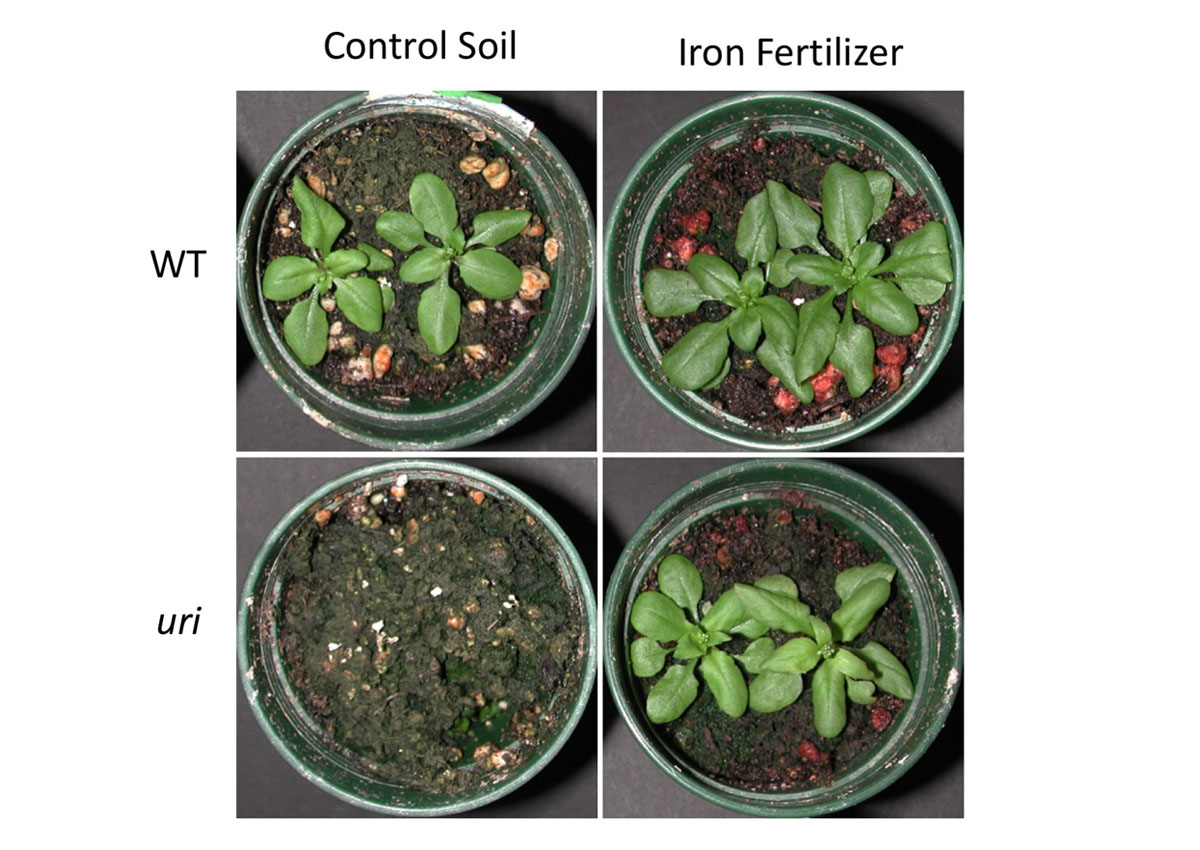
Research Team Discovers Gene for Iron Control in Plants
November 27, 2019| |
Researchers at Dartmouth College in New Hampshire have discovered a gene that controls the regulation of iron uptake in plants. The newly-discovered gene, known as Upstream Regulator of IRT1 (URI), controls when genes should be expressed in plant roots to begin iron uptake. According to the team, URI controls as many as 1,500 other genes, including those that have nothing to do with iron.
The researchers found that the URI protein is always present in plants, and this constant presence created the additional challenge of understanding how the protein senses the status of iron sufficiency in order to regulate itself and avoid toxic overexposure to the element. However, the researchers found that the abundance of URI protein is not changed by iron conditions. Under iron-poor conditions, the protein combines with a phosphate molecule and activates a sequence of genetic events to turn on the iron uptake system. URI also controls a protein that shuts down the transport of iron through the plant root under iron-sufficient conditions.
Iron plays a key role in photosynthesis and plant growth, but it is highly reactive and toxic that plants tend to overregulate it. The research team is now developing a plant with a regulator that stays in the "on" position for a longer amount of time. Their goal is to have plants take up enough iron for the benefit of human consumption.
For more details, read the news release from Dartmouth College.
| |
You might also like:
- Salk Scientists Uncover Gene for Iron Tolerance in Plants
- Iron-rich GM Wheat Set to Undergo Field Trials
- Research Groups Discover How Plants Cope with Iron Deficiency
Biotech Updates is a weekly newsletter of ISAAA, a not-for-profit organization. It is distributed for free to over 22,000 subscribers worldwide to inform them about the key developments in biosciences, especially in biotechnology. Your support will help us in our mission to feed the world with knowledge. You can help by donating as little as $10.
-
See more articles:
-
News from Around the World
- Science and She: Empowering Women in Science
- Scientists Develop "War Room" Simulations to Fight Crop Diseases
- Gene-editing Increases Sorghum's Protein Content
- PH Scientists Lead Discussions on Biotech Crops Safety with Food and Feed Industry
- Biotech Saves Lives, DOH Undersecretary Says
- Engineered Bacteria Produces BeeFree Honey
-
Research Highlights
- Research Team Discovers Gene for Iron Control in Plants
- Utrecht Biologists Discover Mechanism for Plant Growth Under High Temperatures
-
Plant
- Gene Editing of the Jasmonate Biosynthesis OsAOC Gene in Rice
- Study Pinpoints an NLR Gene that Confers Partial Resistance to Rice Blast Fungus
-
Read the latest: - Biotech Updates (December 10, 2025)
- Gene Editing Supplement (November 26, 2025)
- Gene Drive Supplement (February 22, 2023)
-
Subscribe to BU: - Share
- Tweet

